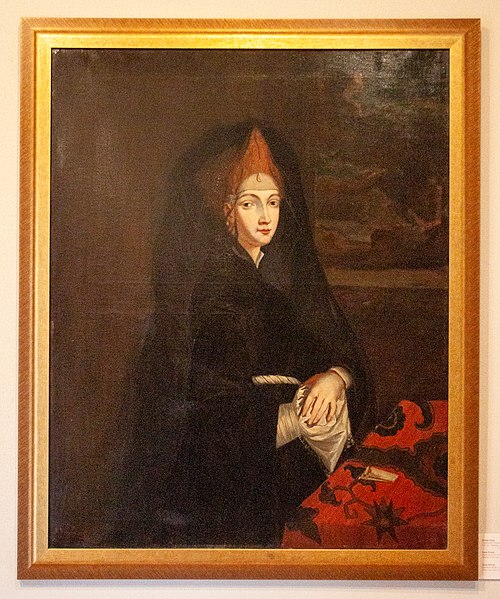Did you know that Europe’s bravest woman was Hungarian?

Ilona Zrínyi (1643-1703) defended the castle of Munkács (Munkacheve, today Ukraine) against the Habsburg army for years to protect her son, the later Prince Francis Rákóczi II (1676-1735). She did not surrender even though she was pregnant during the fight. Later, her eldest living son, Francis Rákóczi, lead a successful freedom fight against the Habsburgs between 1703 and 1711.
Strong women
Hungarian history is full of strong women who were not only brave but showed leadership skills when the time needed it. There is, for example, Hedvig (Jadviga), the youngest daughter of Lajos the Great (1342-1382), whose marriage to Władysław II Jagiełło made Poland a great power of Europe. Or there was Margit Slachta in the 20th century, who valiantly withstood both the emerging Nazi and the Communist dictatorship in Hungary. Without a shadow of a doubt, Ilona Zrínyi was among these strong women.
She could successfully withstand even the Habsburg army with a baby in her womb to protect her family and people.
According to femina.hu, Ilona was well-read and spoke Croatian, Hungarian, Italian, French, Latine and German. She was born in 1643 in Croatia to Péter Zrínyi, the ban (viceroy) of Croatia. Interestingly, the tongue of the family was Croatian. She mastered the Hungarian language with the help of the books of her uncle, Count Miklós Zrínyi (1620-1664). Based on the surviving documents, she was slim, tall and pretty. Many said that despite her feminity, she possessed the bravery of a man. Femina says that she was an expert in fishing, swordfight and falconry. Furthermore, she was skilled in herbs and medicines.

Battleground
Ilona Zrínyi lived in the time of three Hungarian realms. The Kingdom of Hungary was in the hands of the Habsburg dynasty, while the central regions with Buda belonged to the Ottoman Empire. The Principality of Transylvania was independent formally, but, in practice, it had to pay tax to Istanbul. The leaders of Hungary realised during the long 16th century that the Habsburgs could never command enough troops in Hungary to defeat the Ottomans. The opposite was true, as well. The Ottoman Empire passed its zenith in the 16th-century, and a slow decline started by the 17th. Thus,
Hungary became a battleground between the two great powers.
The leaders of Hungary realised there would be a chance, but they could not expect the help of Vienna.
Therefore, secret operations started between the noble families to create an independent Hungarian army that could defeat both Ottomans and the Habsburgs and secure the long-lost Hungarian freedom. However, the plans were revealed. Probably that is why Miklós Zrínyi had to die in 1664. Officially, a wild boar murdered him during a hunt, but people doubted that story already in the 17th century.

Wealth, bravery, power
However, the plan survived, so Ilona’s hand was promised to Transylvanian prince Francis Rákóczi I. As a result, the two greatest families of the Kingdom of Hungary and Transylvania united their incredible wealth and influence. They chose Sárospatak for their new seat after they married in 1666. Her husband took part in the Wesselényi-conspiration in 1670-71. Therefore, her mother-in-law paid a fortune to save his head.
Her uncle, Péter Zrínyi, was not that lucky. He was executed in April, and, with him, the Zrínyi family died out.
Ilona’s firstborn son lived only days, but in 1672, Julianna, then, in 1676, Francis were born, the year when her husband died unexpectedly. She acted quickly. Ilona took command over the Rákóczi forts and gained control of the family’s estates. Moreover, instead of moving to Vienna, she brought her kids to Munkács. To make matters worse, she started to exchange letters with Imre Thököly in 1679. Thököly was the new leader of the anti-Habsburg Hungarian freedom fight movement. They met first in 1680, and it was love at first sight. They received the approvals for the marriage in 1682. They had three children, but all died as infants.
Ilona Zrínyi never gave up
When Thököly had to choose sides between the Ottomans and the Habsburgs, he joined the former. However, the Ottoman army was defeated under Vienna in 1683, marking the start of Hungary’s slow reconquest. The Ottomans suffered defeats after defeats. They recaptured Buda in 1686 and the Habsburg army occupied the Rákóczi, Thököly and Zrínyi forts one after the other.
Only Munkács remained. However, Ilona waited for the troops of her husband for years and did not yield the stronghold to Eugenio Caprara.

She was pregnant during the siege, so her name became famous all around Europe. People called her Europe’s bravest woman. She held the fort for two years and was handed over only in January 1688 because of treason. She was taken into a cloister and was later exchanged for a Habsburg general captured by Imre Thököly in Transylvania in 1690. However,
she could never see her children again.

She died in Anatolia after the Ottoman troops suffered their final and deciding defeat in 1697 near Zenta (today Serbia). She died in the “Valley of Flowers”, as she called it, in 1703 at age 60. Her skull rests in the St Elisabeth Cathedral in Kassa (Slovakia), where she was reburied in 1906.
Source: femina.hu, DNH, wikipedia






Joan of Arc gets my vote as the bravest woman.